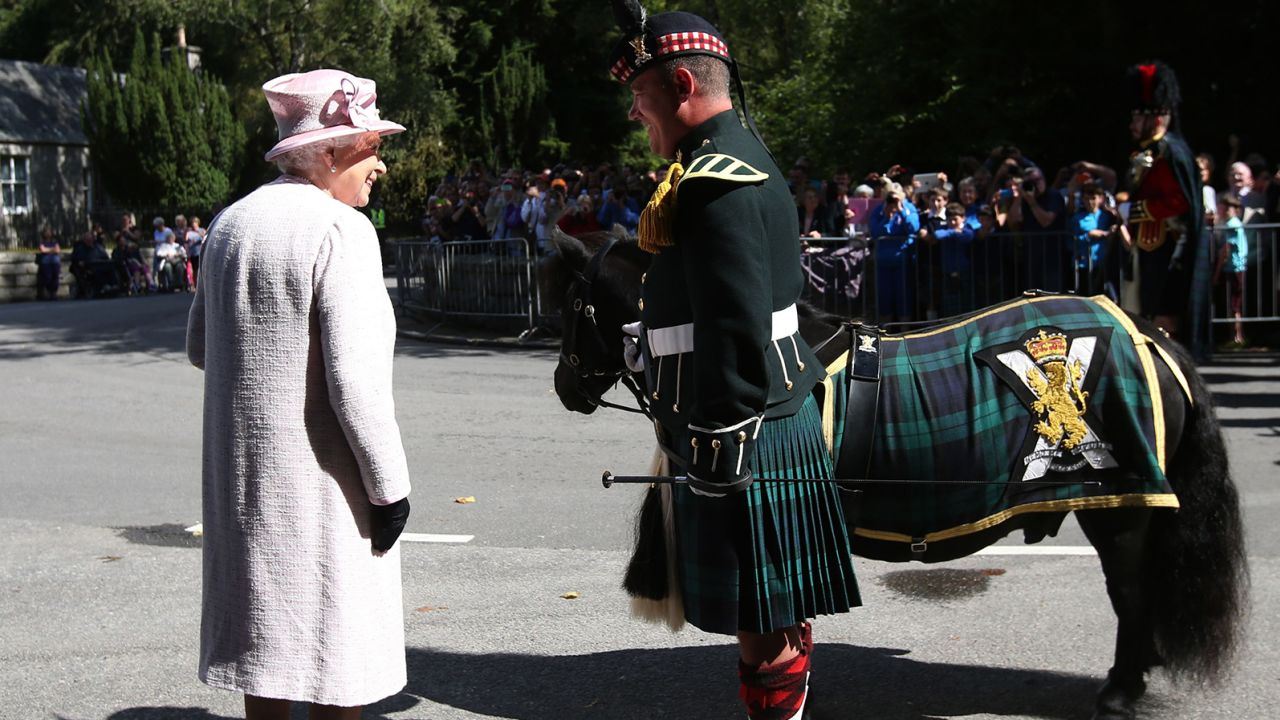A version of this story appeared in the June 30 edition of CNN’s Royal News, a weekly dispatch bringing you the inside track on Britain’s royal family. Sign up here.
London
CNN
—
You may have thought all the major royal moments of the year were over… but hold your horses because one more is coming up. Scotland will celebrate the accession of King Charles III with its own festivities on Wednesday.
The ceremonial events are part of Holyrood Week – also known as Royal Week – which takes place annually and customarily sees the monarch travel to various regions in the country celebrating Scottish culture, achievement and community.
King Charles and Queen Camilla will be joined by Prince William and Kate, who go by their Scottish titles of the Duke and Duchess of Rothesay when north of the border.
“Scotland will welcome the new King and Queen in July with a series of events to mark the Coronation. A People’s Procession, a Royal Procession, a National Service of Thanksgiving and a Gun Salute will take place in Edinburgh,” First Minister Humza Yousaf said in a statement ahead of the event on July 5.
Yousaf said individuals representing various communities and organizations would take part and said there would be opportunities for the public to join the fun too.
The Thanksgiving Service will be held at St. Giles’ Cathedral – which many will remember as a stop on the Queen’s final journey back to London from Balmoral last year. There the Scottish Crown Jewels will be presented to the King.
The most important pieces of the regalia are the crown, scepter and sword – which date back to around the early 16th century.
Known as the Honours of Scotland, the items are made of gold, silver and precious gems and are the oldest crown jewels in Britain. The crown was first worn by James V at the coronation of Queen Mary of Guise in 1540.
Where the solid silver scepter came from is more mysterious though. Some believe it was a papal gift from Innocent VIII to James IV in 1494. The items were first used together at the coronation of the nine-month-old Mary, Queen of Scots in 1543.
The precious regalia is kept at Edinburgh Castle – but the crown jewels were once spirited from their home for protection from Oliver Cromwell’s army, between 1651 and 1660. Much of the English regalia of the time was obliterated during these years and new items had to be commissioned following the restoration of the monarchy.
After the Act of Union in 1707, when English and Scottish Parliaments united, the Honours were locked away in a chest until their rediscovery in 1818 by famous novelist Walter Scott, who also found a mysterious silver wand.
Another item that will be present will be the Stone of Scone or Stone of Destiny – which some keen royal fans will know featured in the Westminster Abbey coronation in early May. The stone, which had been used as a seat in the coronation of Scottish kings for centuries, is now kept in Scotland but was carried down to London for Charles’ first big day.
The Honours will move from Edinburgh Castle to St. Giles’ in a grand People’s Procession featuring 100 individuals representative of Scottish life and escorted by the King’s Body Guard for Scotland, the Royal Company of Archers and an honor guard of Armed Forces personnel, as well as the Royal Regiment of Scotland Shetland pony mascot Corporal Cruachan IV. As they file down the Royal Mile, music will be provided by cadet musicians from the Combined Cadet Force Pipes and Drums, 51 Brigade Cadet Military Band.

There will also be a royal procession from the Palace of Holyroodhouse to the cathedral, supported by the Royal Marine Band (Scotland) and the Pipes, Drums and Bugles of the 2nd Battalion, The Royal Regiment of Scotland (2 SCOTS). A 21-gun salute from the 12 Regiment Royal Artillery will sound at the end of the service before the royal procession returns to Holyroodhouse.
George Gross, a visiting research fellow in theology at King’s College London, said it would be a “poignant moment” for Charles, who stood vigil over his mother’s coffin in the same space less than a year ago.
“This service of thanksgiving is a complex and important event for the monarchy that must as always stand above politics, all the more so in an era of devolution and with the SNP in charge of government at Holyrood,” he said.
“How to combine and respect traditions and symbols of Scottish nationalism, from the Honours of Scotland to the Stone of Destiny, in a service of thanksgiving, whilst avoiding the politics of independence, will be an intricate task.”